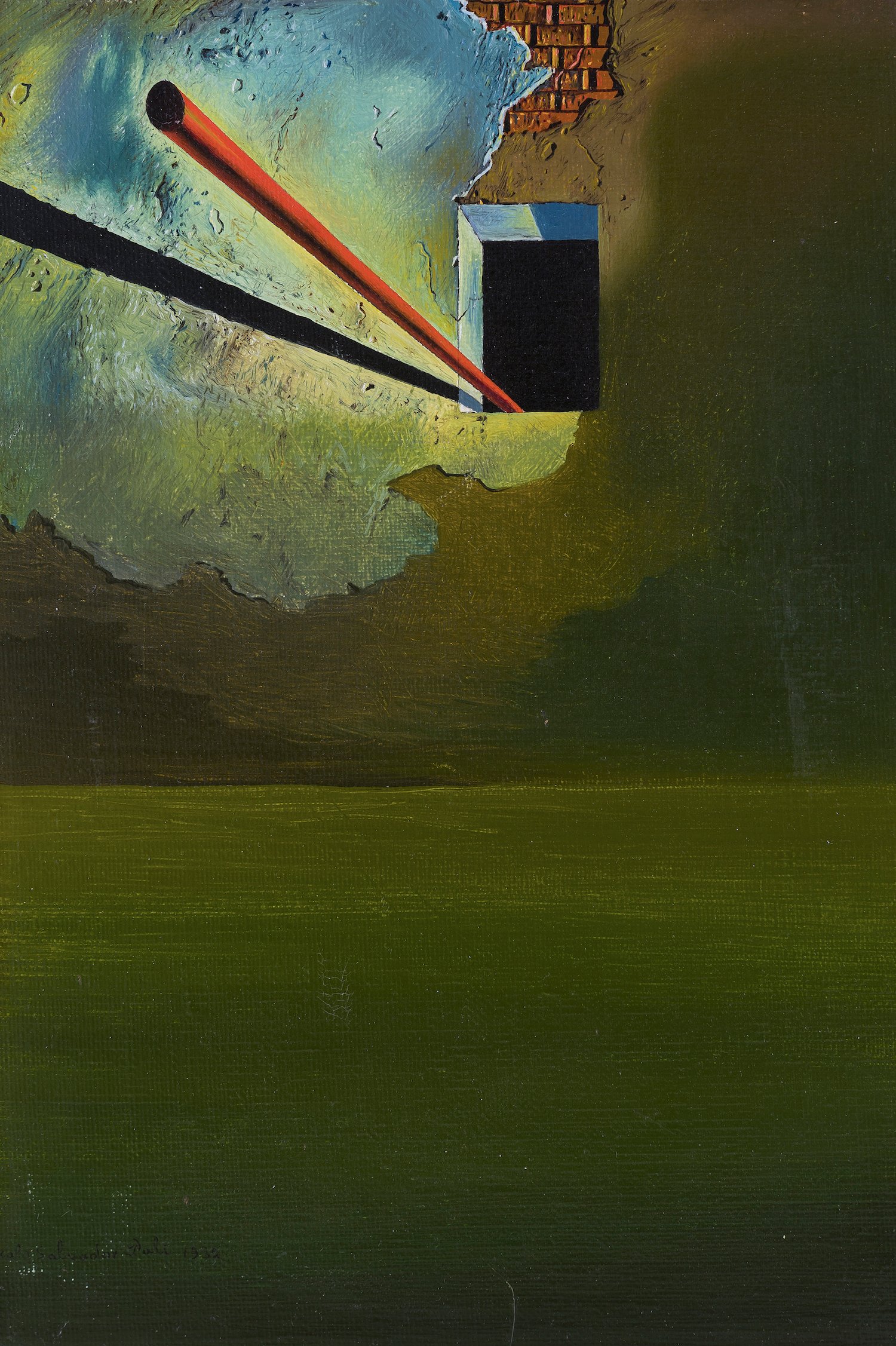
A previously unknown painting thought to be by Salvador Dalí has been salvaged from obscurity and is now going on view at Heather James Fine Art New York. The canvas, recently authenticated by Dalí scholar Nicolas Descharnes, purportedly dates to 1932, and has been housed in a private collection for more than 75 years.
“With a forgery, there is always a mistake you can track somewhere. This one, no mistake,” said Descharnes, who previously helped authenticate the artist’s first Surrealist work, The Intrauterine Birth of Salvador Dalí (c. 1921), in 2014. Descharnes told artnet News that he authenticated the current painting after conducting a battery of tests that included infrared photography and signature and pigment analysis, as well as archival research.
The painting is signed “Gala Salvador Dalí,” which was the artist’s way of paying tribute to his wife Gala, who was some ten years his senior and a stabilizing influence on his life, said Descharnes.
Promisingly, the work contains two recurring motifs that Dalí began using in 1932: a window looking in on an interior space and a protruding pole. (The pigments and materials are also period appropriate, according to test results.)
Because the piece is untitled, and Dalí had a habit of renaming his works, Descharnes was unable to definitively establish its exhibition history. It seems likely, however, that it was included in one of two shows the artist held that year at Galerie Pierre Colle in Paris, where the records list some untitled paintings.
Salvador Dalí, Morphological Echo (1934–36). Courtesy of the Salvador Dalí Museum, St. Petersburg, Florida.
The painting appears to be inspired by an exterior window from the Port Lligat, Spain, home that Dalí and Gala shared from 1932 to 1982. (Now known as the Portlligat Museum-House, it is open to the public with advance reservations.) Descharnes speculated that the flagpole sticking out from the wall might in fact be based on the masts of the fishing boats in the seaside town. Tests found that the painting’s stretcher was made in Spain, adding credence to the theory that it was painted during Dalí’s first months living there.
Beneath those two elements, the painting is unusually spartan, creating a rather unbalanced composition. This is further evidence of authenticity, said Descharnes. “The forger wouldn’t leave the painting without anything on the ground, because the forger needs to make a painting that is attractive.”
He believes the work is a study—and indeed, the window and pole reappear in Dalí’s later work, Morphological Echo (1934–36). “It’s a demonstration,” Descharnes said. “He just put his two brand new obsessions of that year.”
The work has not so far been added to the Gala-Salvador Dalí Foundation’s official catalogue raisonné, but it is on view by appointment at the Heather James gallery. The artist’s record at auction, according to the artnet Price Database, is £12.48 million ($21.74 million), for Portrait de Paul Éluard (1929), which sold at Sotheby’s London in 2001.